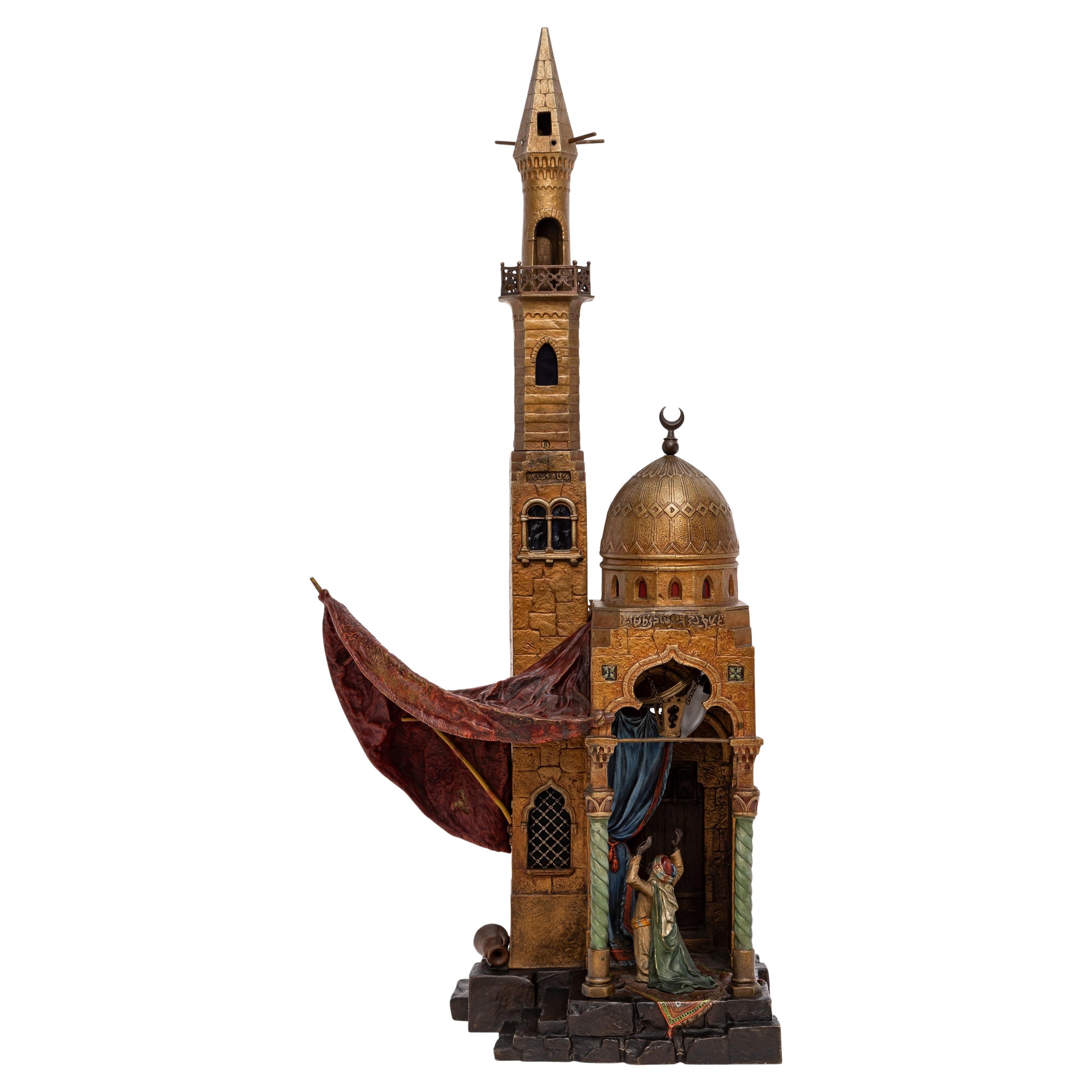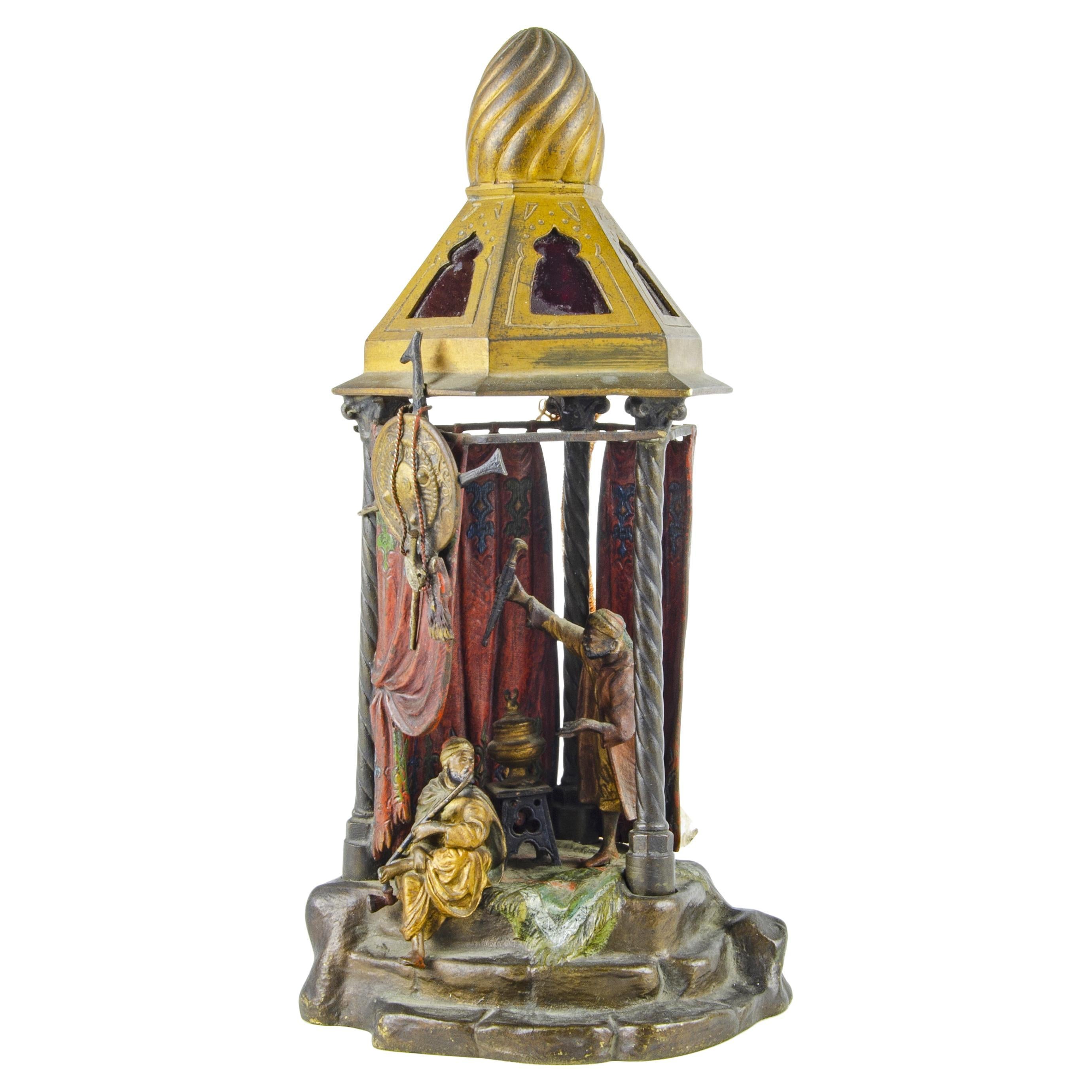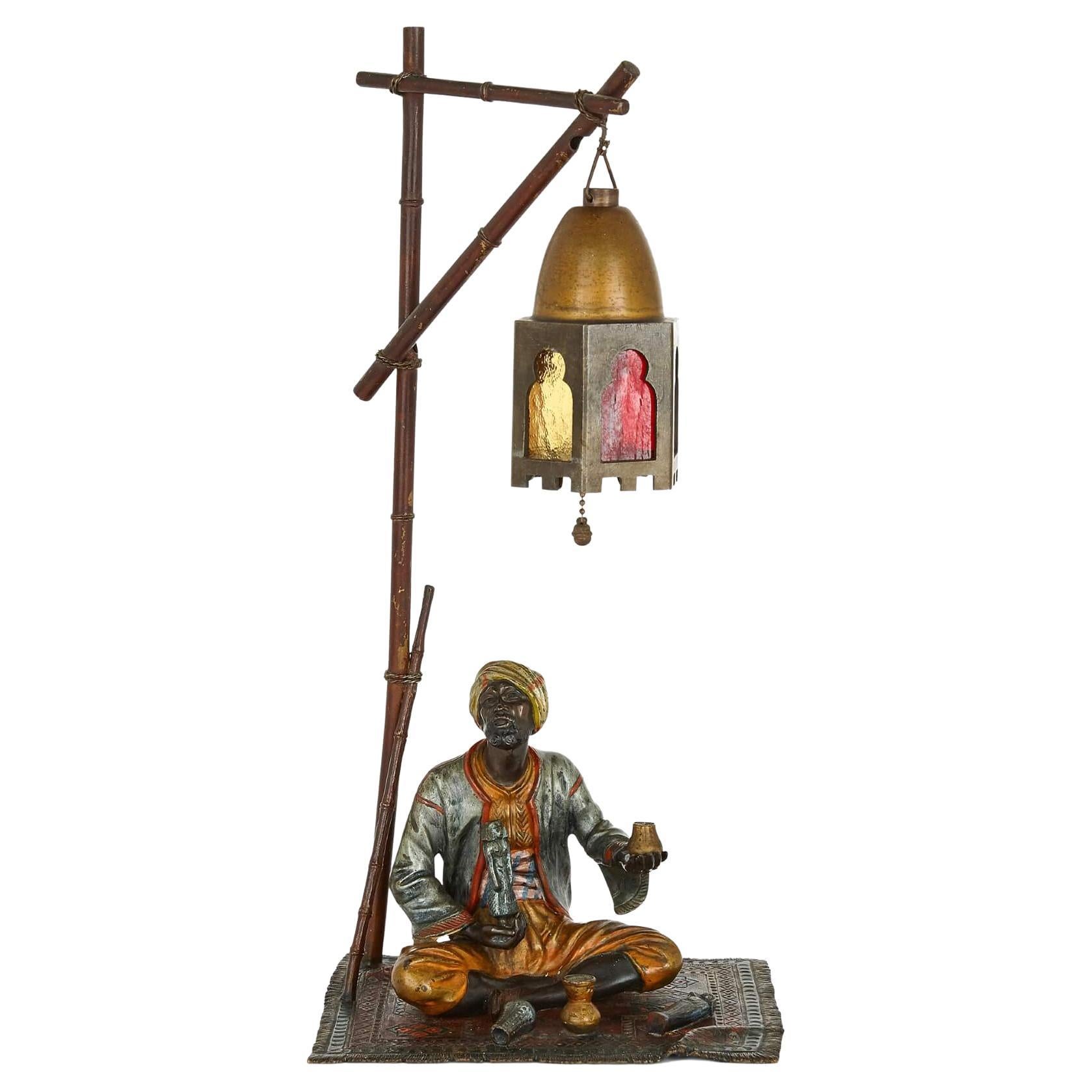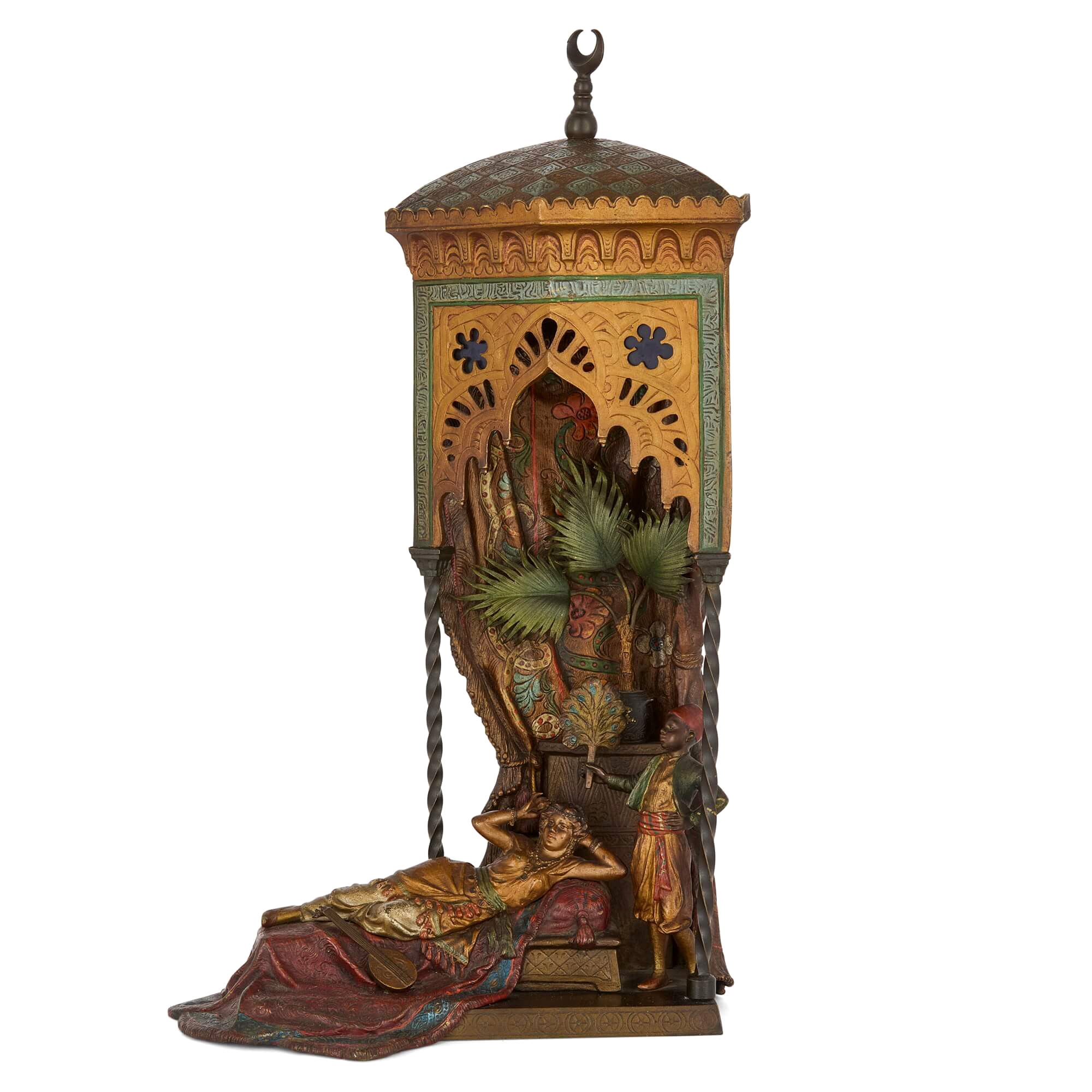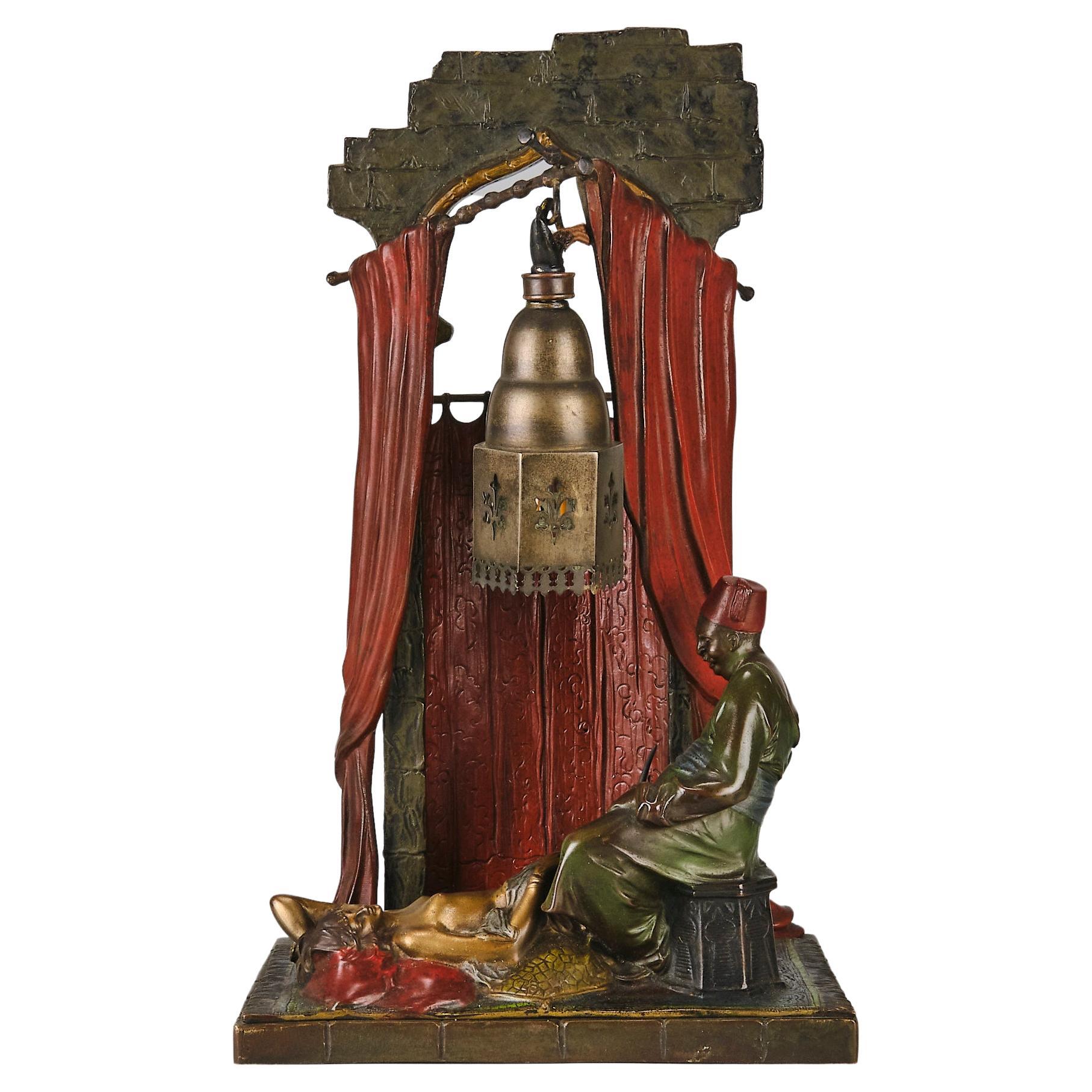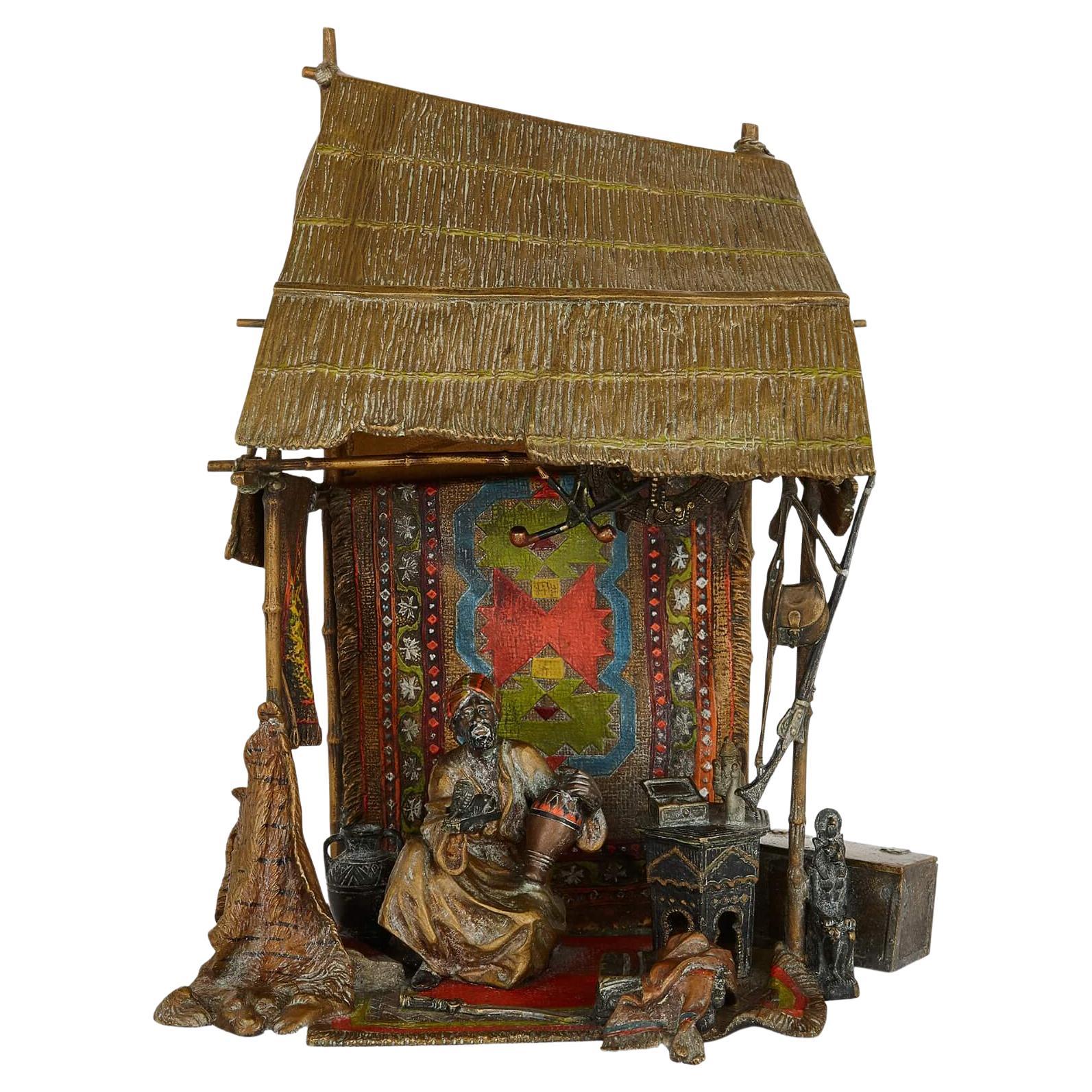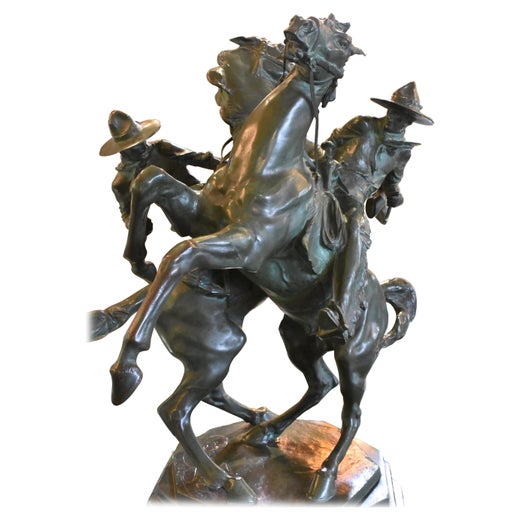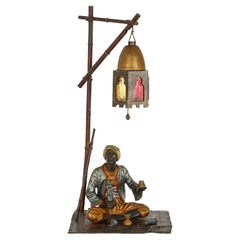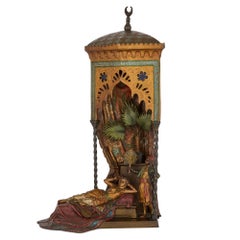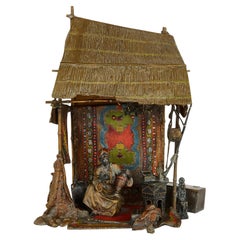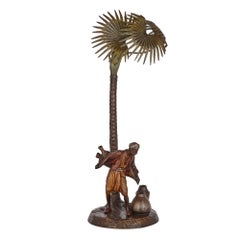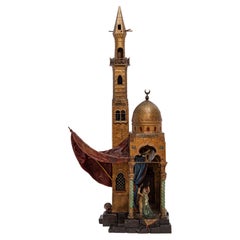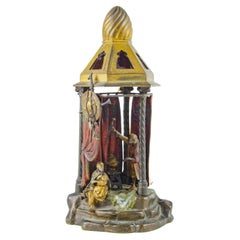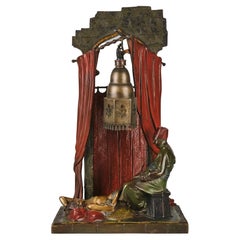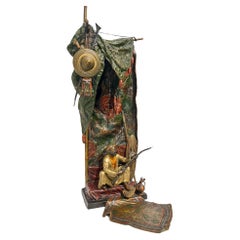Viennese Cold-Painted Bronze Orientalist Figurative Lamp of a Dancer by Zach
About the Item
- Creator:Bruno Zach (Artist)
- Dimensions:Height: 17.33 in (44 cm)Width: 8.27 in (21 cm)Depth: 7.09 in (18 cm)
- Style:Art Deco (In the Style Of)
- Materials and Techniques:
- Place of Origin:
- Period:
- Date of Manufacture:c. 1920
- Condition:Wear consistent with age and use.
- Seller Location:London, GB
- Reference Number:Seller: N-0122O1stDibs: LU956337226672
Bruno Zach
Bruno Zach was an Austrian art deco sculptor of Ukrainian birth who worked in the early-to-mid 20th century. He emigrated to Austria as a young man and studied at the Vienna Academy under sculptors Hans Bitterlich and Josef Müllner. He worked in Austria as well as in Germany. Famous for his Fine bronzes made for the Wiener Bronze, or Vienna Bronze manufactory, the Ukrainian-born Zach was best known for his figures of flirtatious, sexually liberated young women.
- ShippingRetrieving quote...Shipping from: London, United Kingdom
- Return Policy
More From This Seller
View AllEarly 20th Century Austrian Figurative Sculptures
Bronze
Early 20th Century Austrian Table Lamps
Bronze
Early 20th Century Austrian Figurative Sculptures
Bronze
Early 20th Century Austrian Islamic Table Lamps
Bronze
Antique 19th Century Austrian Moorish Table Lamps
Bronze
Early 20th Century Austrian Islamic Table Lamps
Marble, Bronze
You May Also Like
Antique 1890s Austrian Moorish Table Lamps
Bronze
Vintage 1910s Austrian Jugendstil Table Lamps
Metal, Bronze, Copper, Tin
Early 20th Century Ukrainian Art Deco Figurative Sculptures
Bronze
Early 20th Century Table Lamps
Bronze
Vintage 1910s Austrian Art Nouveau Table Lamps
Bronze
Early 20th Century Austrian Other Table Lamps
Marble, Bronze
Read More
Exquisite Sèvres Porcelain Brings More to the Table than Dishes
The elegant ceramics represent the best of French artistry and innovation.
What Is Ormolu, and Why Are We Talking about It?
This golden material glamorized neoclassical furnishings and transformed upper-crust sitting rooms from France to Philadelphia in the 18th and early 19th centuries.
